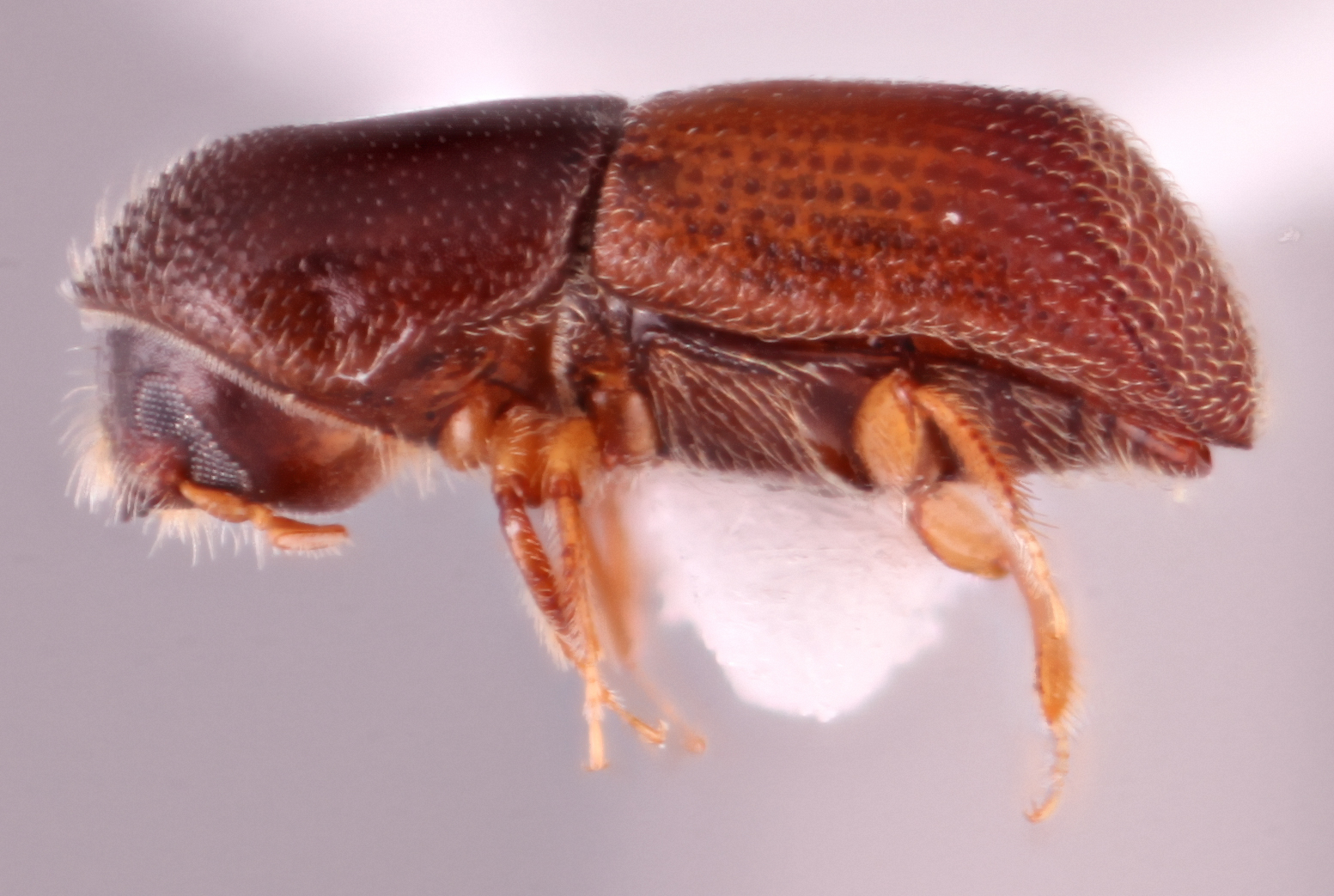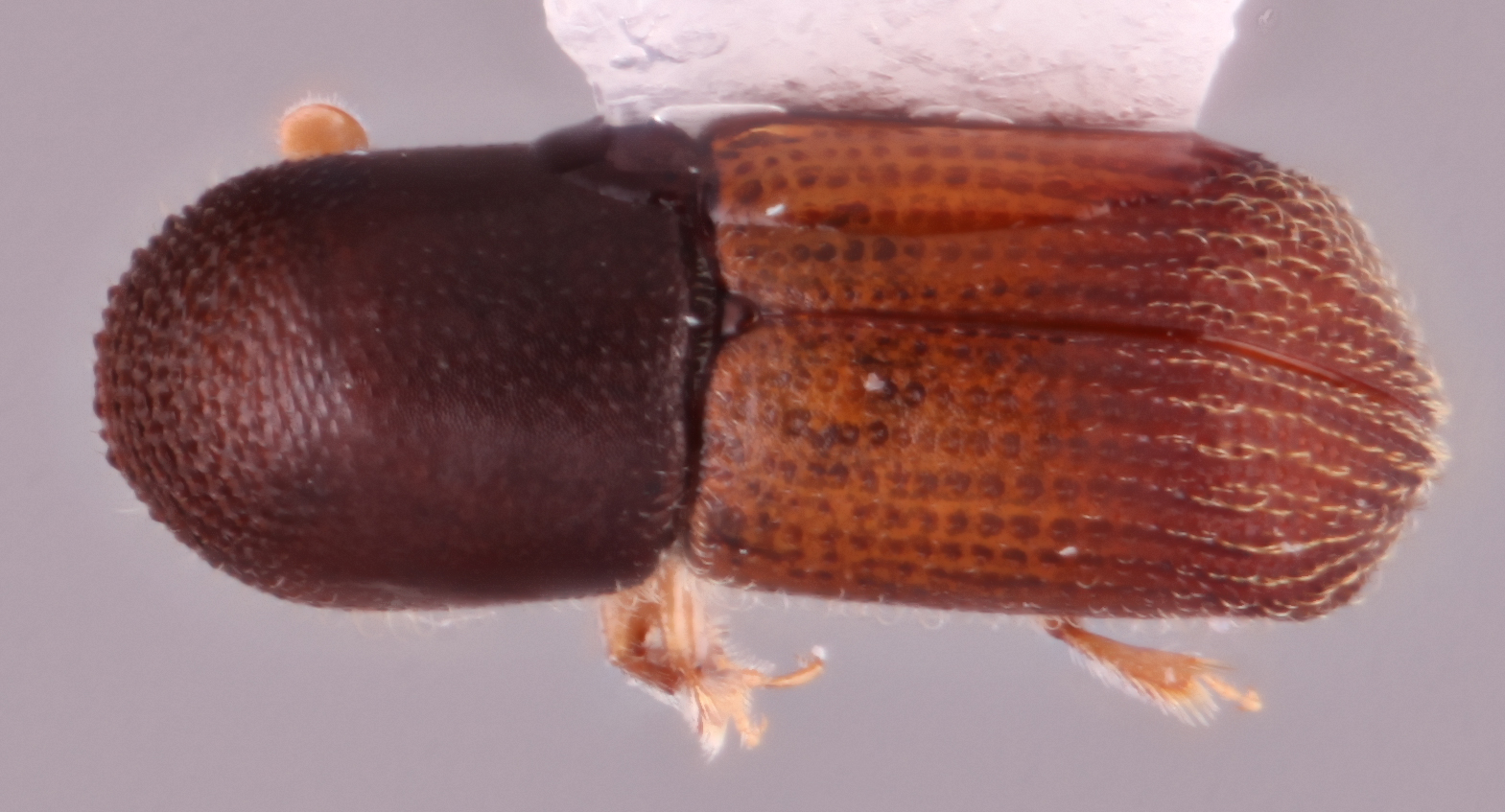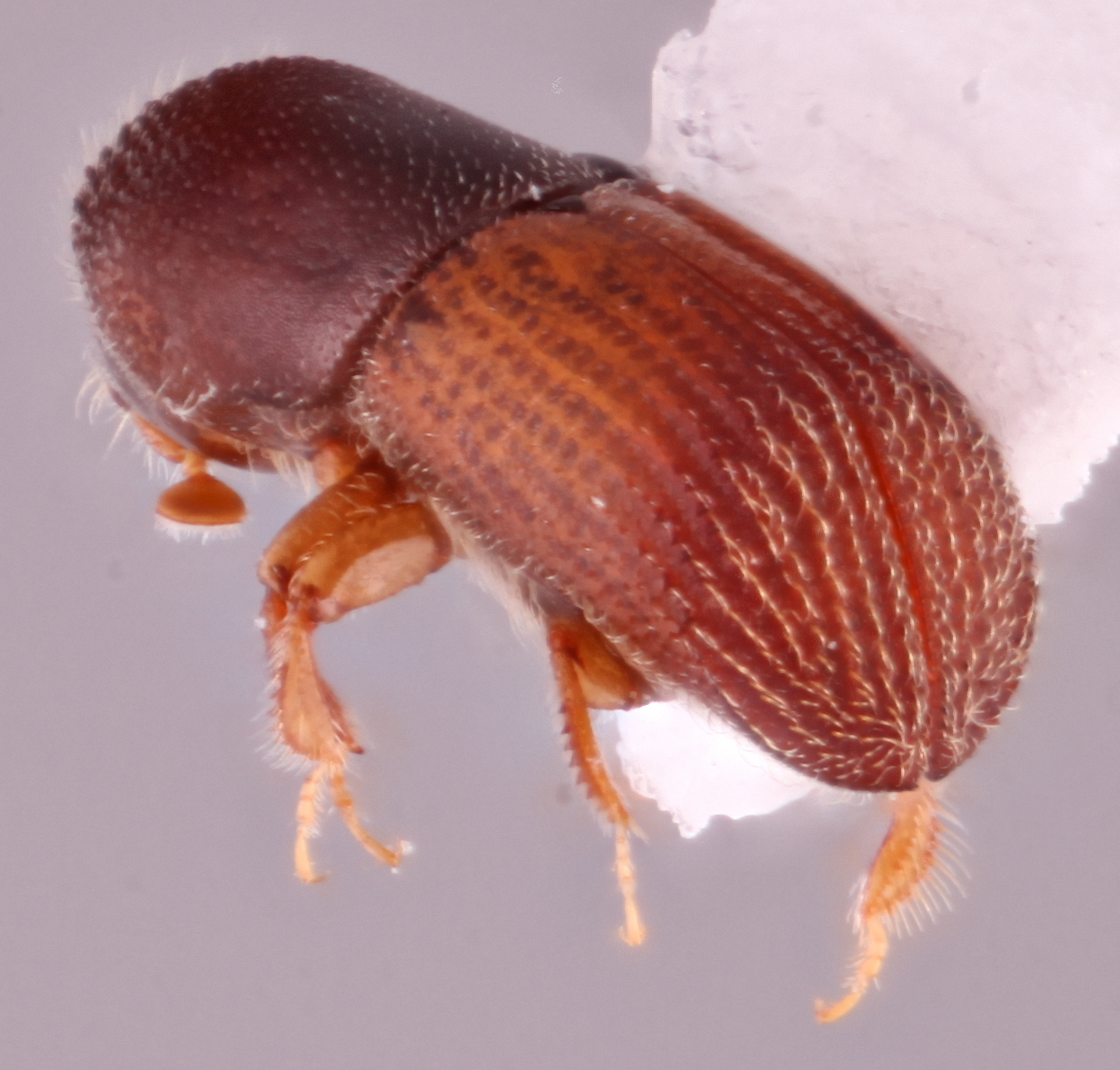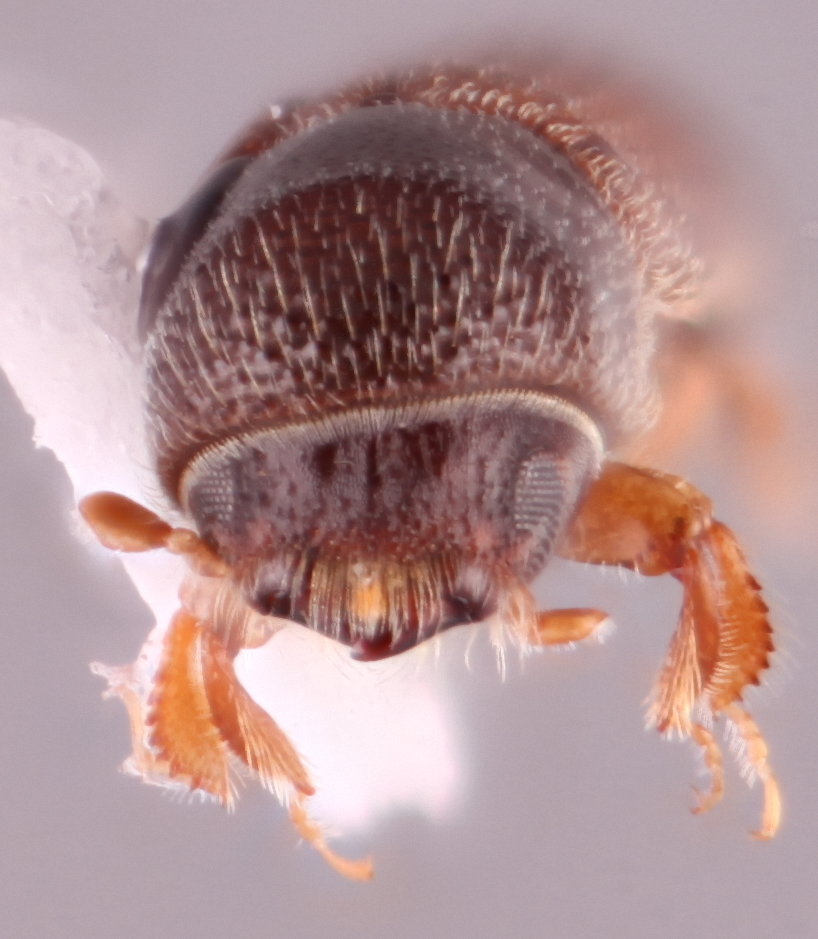Arixyleborus mediosectus
|
Arixyleborus mediosectus lateral; S.M. Smith |
|
Arixyleborus mediosectus dorsal; S.M. Smith |
|
Arixyleborus mediosectus declivity; S.M. Smith |
|
Arixyleborus mediosectus frontal; S.M. Smith |
Taxonomic history
Xyleboricus mediosectus Eggers, 1923: 215.
Arixyleborus mediosectus (Eggers): Schedl, 1958c: 145.
Synonyms
Arixyleborus angulatus Schedl, 1942a: 183. Wood, 1989: 170.
Diagnosis
1.9−2.1 mm long (mean = 1.98 mm; n = 5); 2.86−3.33 times as long as wide. This species is distinguished by the protibiaprotibia:
tibia of the first pair of legs
posteriorposterior:
toward the rear end; opposite of anterior
 face inflatedinflated:
face inflatedinflated:
blown up; distended
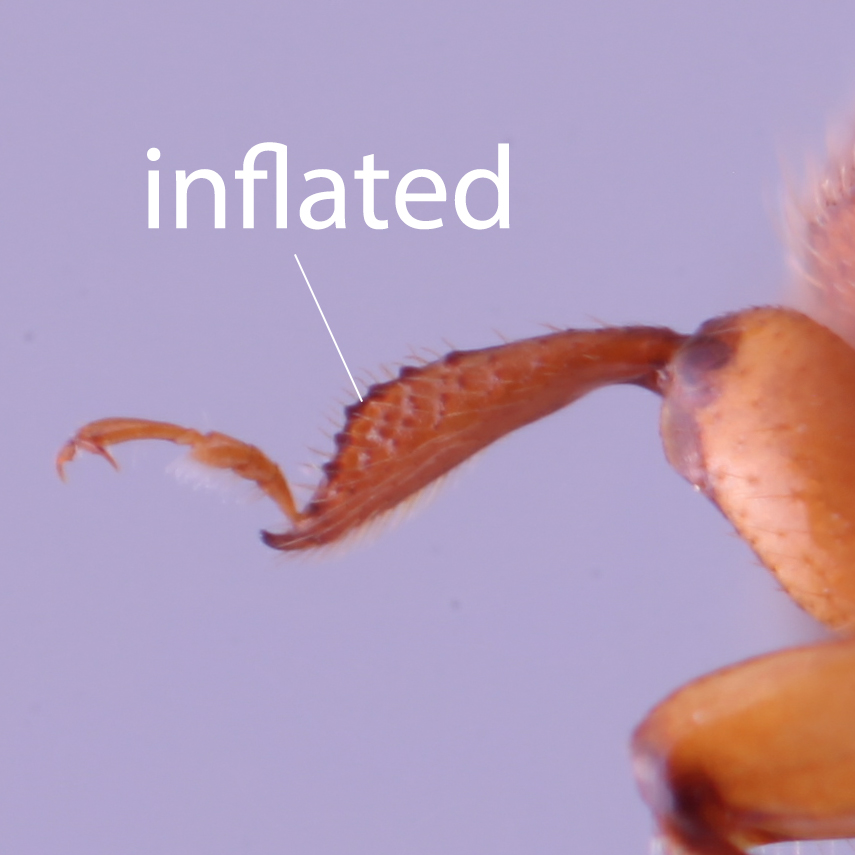 and granulate; antennalantennal:
and granulate; antennalantennal:
pertaining to the antennae
club broader than tall; pronotumpronotum:
the dorsal surface of the thorax
laterallateral:
pertaining to the side
 margin oblique; pronotumpronotum:
margin oblique; pronotumpronotum:
the dorsal surface of the thorax
anterioranterior:
the front or forward; opposite of posterior margin without serrations; and posterolateralposterolateral:
margin without serrations; and posterolateralposterolateral:
relating to end of the side part/portion
 carinacarina:
carinacarina:
an elevated ridge or keel, not necessarily high or acute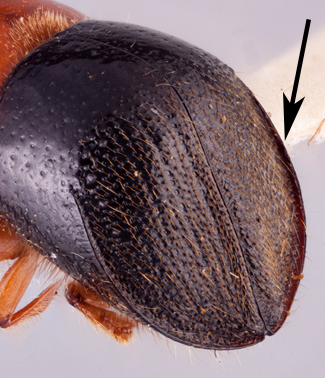 acute, granulategranulate:
acute, granulategranulate:
pertaining to a coarse, grainy surface texture
 .
.
It can be further distinguished from the closely related A. silvanus by the more elongate form (2.6–2.7 times as long as wide in A. silvanus), more elongate pronotumpronotum:
the dorsal surface of the thorax
(1.3 × longer than wide vs 1.1–1.2 times in A. silvanus), the more finely granulategranulate:
pertaining to a coarse, grainy surface texture
 interstriae, and shallowly impressedimpressed:
interstriae, and shallowly impressedimpressed:
a depression in a surface
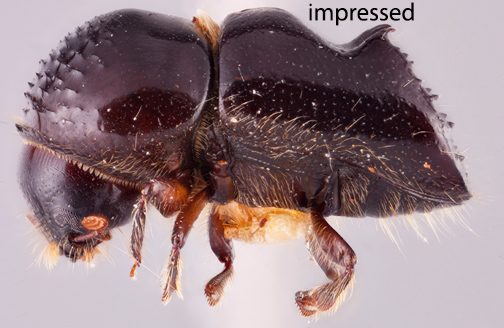 striae at the apexapex:
striae at the apexapex:
point or edge furthest from the body; opposite of base
 of the elytralelytral:
of the elytralelytral:
pertaining to the elytra
discdisc:
the flat central upper surface of any body part (e.g. pronotum and elytra) , and the presence of short coarse setaeseta:
, and the presence of short coarse setaeseta:
small hair-like or scale-like structure
on the declivitydeclivity:
downward slope of either the pronotum or elytra
 rather than fine hair-like setaeseta:
rather than fine hair-like setaeseta:
small hair-like or scale-like structure
. It can be further distinguished from the closely related A. crassior by the more elongate form (2.5 times as long as wide in A. crassior) and short coarse setaeseta:
small hair-like or scale-like structure
on the declivitydeclivity:
downward slope of either the pronotum or elytra
 .
.
May be confused with
Arixyleborus crassior, A. phiaoacensis, and A. silvanus
Distribution
‘Borneo’, Cambodia, India (Andaman Is, Assam), Indonesia (Sumatra), Laos, East & West Malaysia, Philippines, Sri Lanka, Thailand, Vietnam
Host plants
polyphagous (Maiti and Saha 2004Maiti and Saha 2004:
Maiti PK, Saha N. 2004. Fauna of India and the adjacent countries. Scolytidae: Coleoptera (bark and ambrosia beetles). Vol. 1. Part 1. Zoological Survey of India, Kolkata, 268 pp.); It has also been collected from the crop of an edible-nest swiftlet (Collocalia fuciphaga) (Beaver and Browne 1978Beaver and Browne 1978:
Beaver RA, Browne FG. 1978. The Scolytidae and Platypodidae (Coleoptera) of Penang, Malaysia. Oriental Insects 12: 575-624. https://doi.org/10.1080/00305316.1978.10432538).
DNA data
Sequences available for COI and CAD.
COI: OP617796
CAD: OP607226

